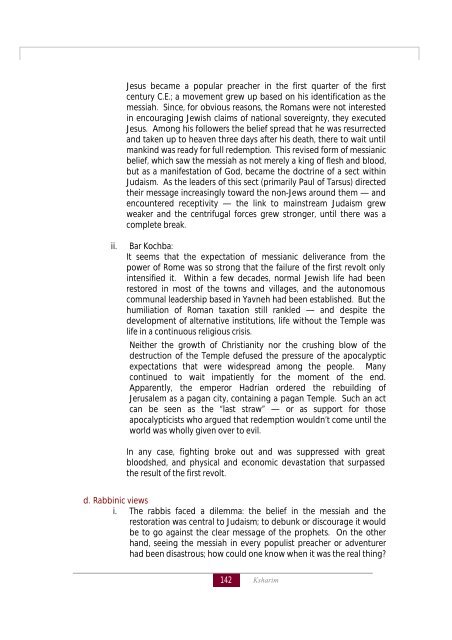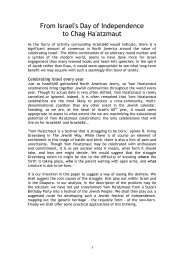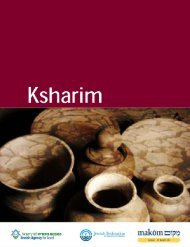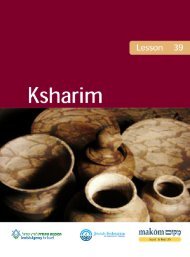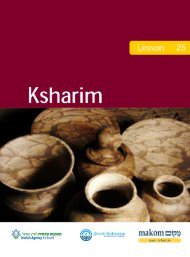Click here for printable pdf - Makom Israel
Click here for printable pdf - Makom Israel
Click here for printable pdf - Makom Israel
- No tags were found...
You also want an ePaper? Increase the reach of your titles
YUMPU automatically turns print PDFs into web optimized ePapers that Google loves.
Jesus became a popular preacher in the first quarter of the firstcentury C.E.; a movement grew up based on his identification as themessiah. Since, <strong>for</strong> obvious reasons, the Romans were not interestedin encouraging Jewish claims of national sovereignty, they executedJesus. Among his followers the belief spread that he was resurrectedand taken up to heaven three days after his death, t<strong>here</strong> to wait untilmankind was ready <strong>for</strong> full redemption. This revised <strong>for</strong>m of messianicbelief, which saw the messiah as not merely a king of flesh and blood,but as a manifestation of God, became the doctrine of a sect withinJudaism. As the leaders of this sect (primarily Paul of Tarsus) directedtheir message increasingly toward the non-Jews around them — andencountered receptivity — the link to mainstream Judaism grewweaker and the centrifugal <strong>for</strong>ces grew stronger, until t<strong>here</strong> was acomplete break.ii.Bar Kochba:It seems that the expectation of messianic deliverance from thepower of Rome was so strong that the failure of the first revolt onlyintensified it. Within a few decades, normal Jewish life had beenrestored in most of the towns and villages, and the autonomouscommunal leadership based in Yavneh had been established. But thehumiliation of Roman taxation still rankled — and despite thedevelopment of alternative institutions, life without the Temple waslife in a continuous religious crisis.Neither the growth of Christianity nor the crushing blow of thedestruction of the Temple defused the pressure of the apocalypticexpectations that were widespread among the people. Manycontinued to wait impatiently <strong>for</strong> the moment of the end.Apparently, the emperor Hadrian ordered the rebuilding ofJerusalem as a pagan city, containing a pagan Temple. Such an actcan be seen as the “last straw” — or as support <strong>for</strong> thoseapocalypticists who argued that redemption wouldn’t come until theworld was wholly given over to evil.In any case, fighting broke out and was suppressed with greatbloodshed, and physical and economic devastation that surpassedthe result of the first revolt.d. Rabbinic viewsi. The rabbis faced a dilemma: the belief in the messiah and t<strong>here</strong>storation was central to Judaism; to debunk or discourage it wouldbe to go against the clear message of the prophets. On the otherhand, seeing the messiah in every populist preacher or adventurerhad been disastrous; how could one know when it was the real thing?142 Ksharim


